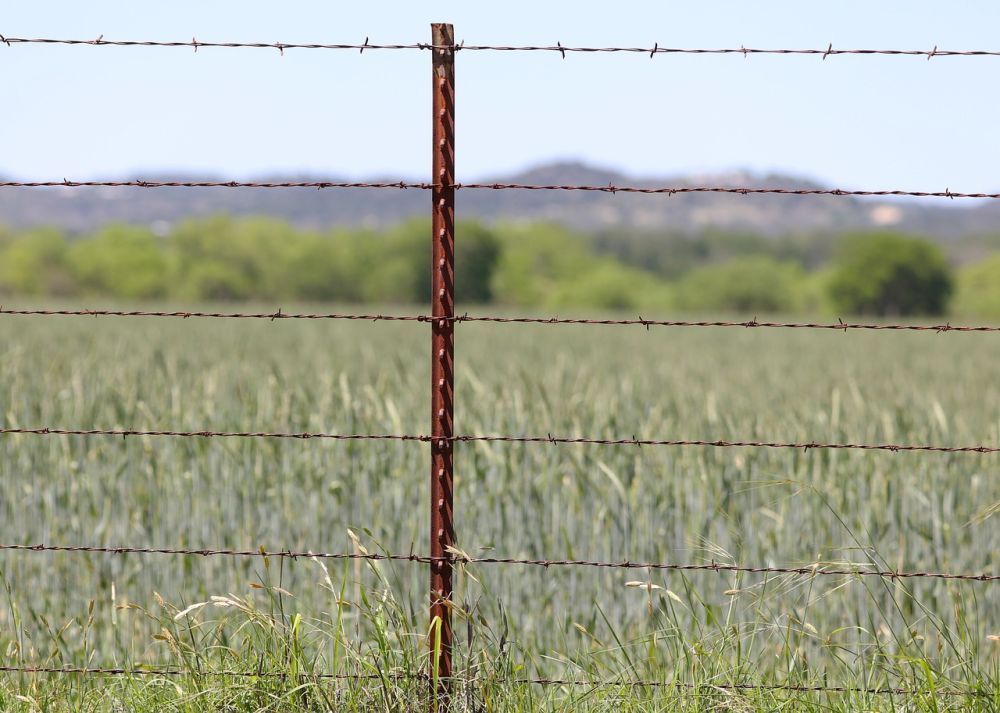
What Are T-Posts and How Are They Used In Fencing?
If you’ve been looking for easy-to-install, low-cost fence solutions, chances are you’ve run into the term t-post, and you might have wondered what t-posts are, how they are used, and if they might be right for your fence project.
Here’s what you need to know about what t-posts are, what kind of fencing they are used for, where you can buy them and more.
What Are T-Posts?

T-posts are pre-formed metal sections that, when viewed in cross-section, look a little like a T.
In some countries, there are similar metal posts that are slightly larger and are known as Y-sections for the same reason.
T-posts are what we call in the fence industry “droppers” or sometimes pickets. They take the place of intermediate posts or standards on some kinds of fencing.
What Are T-Post Made From?
T-posts are manufactured from steel, and usually, unless you specifically request galvanized T-posts, they are simply prepped and painted after they are manufactured and cut to size.
Some t-posts also have a foot piece at the bottom that is designed to provide added stability to the post once installed.
What Kind of Fences Are T-Posts Used for?
T-posts are used in a variety of settings.
They might be used to support snow fence or some other kind of temporary mesh or netting. They are also used for some types of temporary and semi-permanent fencing, where temporary fence panels might not work but where you don’t want a permanent structure.
T-posts are often used for agricultural fences, too, ranging from things like chicken run fencing to various applications in vineyards.
How Are T-Posts Installed?
|
T-posts are installed by knocking or driving them into the ground. There are various ways to do this, ranging from a hammer or mallet to a t-post driver to various pieces of fence installation equipment that can drive these kinds of posts into the ground. The good news is that because they are not usually installed in concrete, t-posts are also relatively easy to remove using chains or a fence post puller. |
How Deep Are Fence Posts Installed?
Like most types of fence, there’s no hard and fast rule about how deep you have to install t-posts or y-sections.
It really does depend on the soil type, fence type and other factors. However, simply to ensure that your fence is reasonably stable, you probably want to install them at least one or preferably two feet into the ground.
Softer soil might require you to install your t-posts deeper, or if there are underground services in the area, you might want to go a little shallower. In this case, let the site and fence type dictate the answer!
Where And How Can You Buy T-Sections?
|
T-sections are a very common product, and they are available in a wide variety of places. Many fence companies sell them direct to the public, but you can also try big box hardware stores, agricultural supply stores and co-ops. There are also various online suppliers. Some suppliers and distributors of t-posts will only sell full bundles of product, which means they’re only suitable for larger, commercial-sized projects. But there are also some who will sell only what you need. Just bear in mind that for smaller quantities, you will probably be paying the retail price! |
Can You Buy Second-Hand T-Sections?
Second-hand fence is always tricky to track down, but it is possible to find used or second-hand t-posts if you’re looking.
Try online classified sites like Craigslist, Kijiji or Gumtree (depending on where you are) and online marketplaces on Facebook or elsewhere. You might also have some luck posting a want ad in a local fence group on social media.
How Far Apart Are T-Posts Usually Installed?
Again, there’s no hard and fast rule about how far apart t-posts need to be installed – unless you are working according to a specification!
Depending on the type of fence you are installing, you could put them as close as chain link fence posts – usually about 10 feet or 3 meters, or you could install them at 12, 15 or even more feet. The major deciding factor here will be what kind of fence material you are using and how much weight it will put on the posts.
Another factor in t-post fence design and installation is what kind of tension posts you are using and how they are installed. In the case of most mesh and wire fences, the tension post will carry most of the load for the fence line it is installed on.
The Pros and Cons of T-Posts
Like every fence and fence material, there are pros and cons to using t-posts for your fence.
On the plus side, t-posts are relatively cheap and easy to install; this will keep labor and material costs down and makes this ideal for places where you need a quick barrier install.
The downside to t-posts is that they’re not very secure since they’re not installed in concrete and can be removed easier. Because they’re usually not galvanized, they also tend to rust faster.


